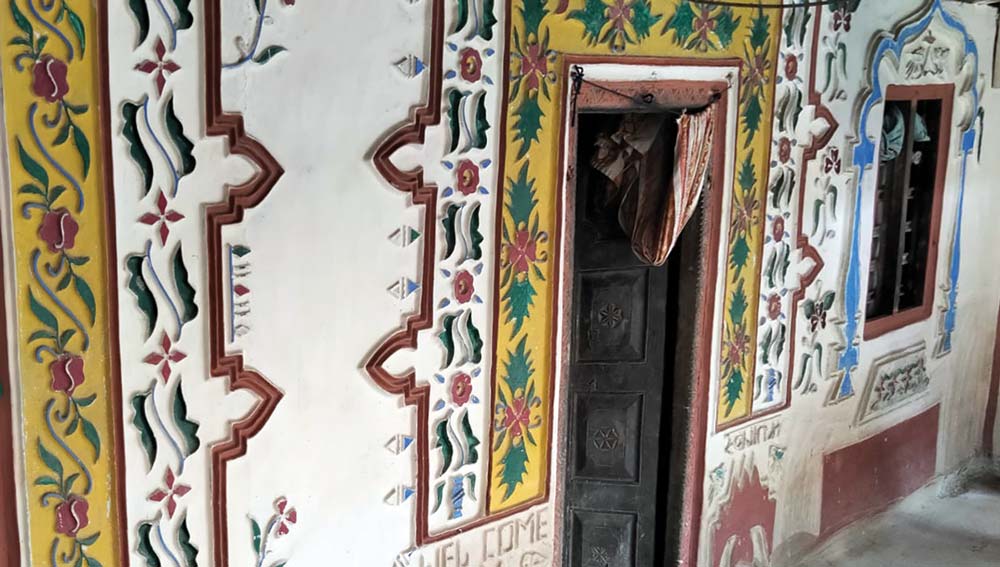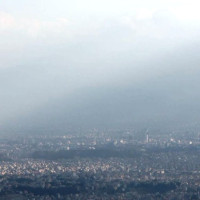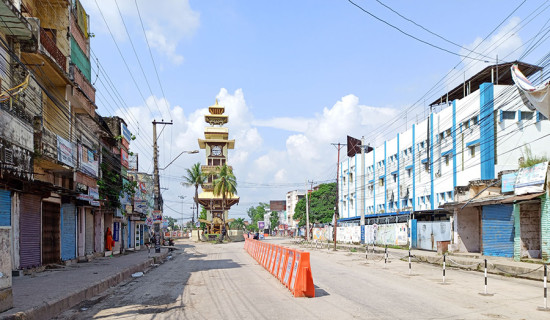- Monday, 5 January 2026
Tharu homes sans wall paintings with surge of concrete buildings
BY BABURAM KARKI
Barahakshetra, Sep. 8: The traditional artistic wall paintings (maukh) in Tharu settlements in the Tarai regions of eastern Nepal including Sunsari, Morang, Jhapa and Saptari have begun to disappear.
These paintings, which have been created since ancient times, were traditionally found on the walls of houses made from mud, bamboo and thatch. With the decline of such traditional thatched houses, replaced by modern brick and mortar homes, the ancient artistic wall paintings are fading away.
According to Ram Sagar Chaudhary, Vice-chairman of the Sunsari Gramthan Conservation Committee, previously most Tharu homes in rural areas were made of mud and adorned with artistic wall paintings. However, in the past decade, scarcity of wooden posts and the rise of modern brick houses have led to the disappearance of these traditional, artistically decorated mud homes. As these houses dwindle, so do the traditional skills and art forms of painting that were once prevalent among the Tharus. He said that without the transfer of painting skills to the second generation, the artistic houses had disappeared.
The houses made from wooden and bamboo pillars with thatched roofs, coated with mud are disappearing. Consequently, various artistic patterns associated with Tharu culture on the walls are also disappearing.
Sunil Chaudhary, secretary of the Sunsari Gramthan Conservation Committee, said that the disappearance of these beautifully painted mud houses reflected a loss of the traditional Tharu painting skills among the younger generation.
According to Vice-chairman Chaudhary, in the past, Tharu youths were busy decorating their homes with intricate designs during festivals like Deepawali (Tihar), believing that pleasing Goddess Lakshmi would bring blessings. Houses were adorned with various motifs on the walls to welcome the goddess.
Journalist Nishan Prakriti Tharu said that from August to October, decorating homes with these traditional patterns was common but with the shift to permanent and cement houses, the use of traditional plaster and red mud had stopped. He said that current generation no longer sees houses with maukh paintings.
Young Tharu women used to take great care in decorating their homes, regardless of their simplicity. They would paint their homes with great enthusiasm. Savitri Chaudhary, president of the Sunsari Gramthan Conservation Committee, said that today’s youth lack the skills to paint. The traditional art of making patterns, which was once a part of Tharu culture in the districts of Saptari, Sunsari, Morang and Jhapa, was fading as the new generation lacked interest in these skills.
The intricate patterns that could take weeks or even months to complete showcased the skill and dedication of Tharu women. These paintings often depicted flowers, homes, mountains and deities. Secretary Chaudhary said that skilled Tharu women used appropriate colours and techniques to create these artworks. Traditionally, brides would show this art to their future husbands and in return, the grooms would use blue colour in peacock paintings to approve the marriage. However, this tradition had now lost.
Earlier generations of women were highly skilled in making these patterns. The younger generations, lacking interest in these arts, have seen the decline of this skill. Saraswati Chaudhary of Ramdhuni said that while these wall paintings once held significant social, religious and cultural value, this appreciation had declined among Tharu women. The beauty and cultural importance of these wall paintings had diminished as the traditional art form fades away.




-square-thumb.jpg)




-original-thumb.jpg)
-original-thumb.jpg)

-original-thumb.jpg)
-original-thumb.jpg)
